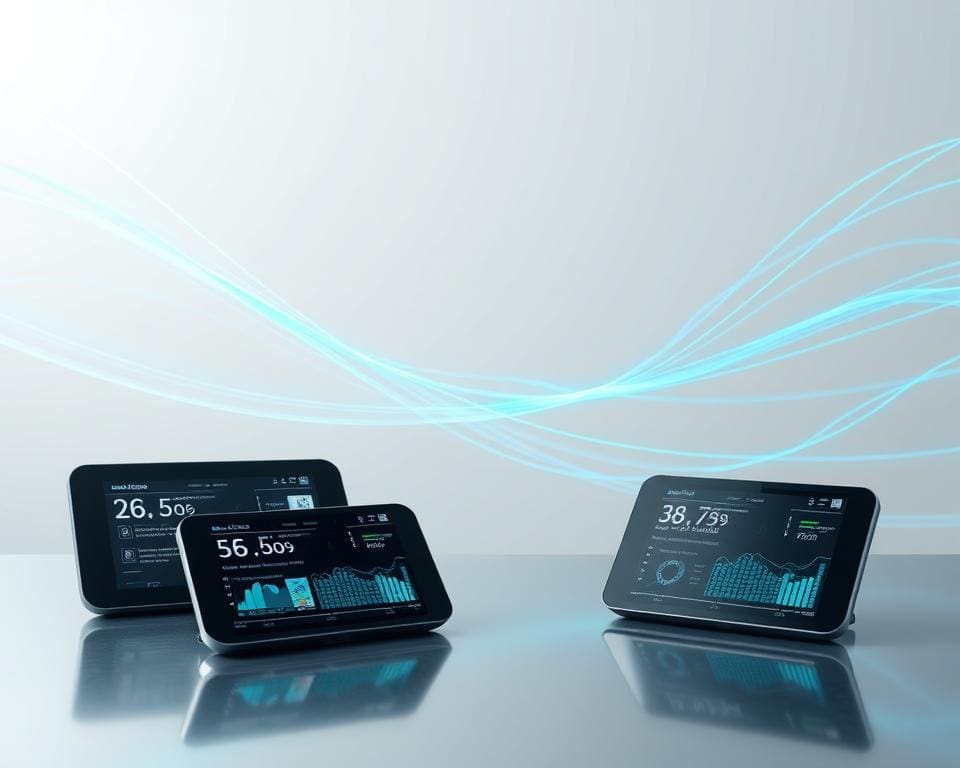The advent of 5G technology heralds a new era in connectivity, inciting excitement and curiosity across the globe. As we transition from traditional WiFi to this advanced mobile network, the anticipation surrounding 5G is palpable. Often described as ‘WiFi on steroids,’ 5G promises not only higher speeds but also enhanced reliability, fundamentally transforming how we connect in our daily lives. The growing need for fast and robust internet is evident, and many are eager to explore whether this technological upgrade can indeed deliver on its lofty promises.
The Evolution of Wireless Technology
The journey of wireless technology has seen remarkable advancements over the years, reshaping how individuals connect and interact. From the early days of 2G to the rapid developments introduced with 4G, each generation has brought significant enhancements. The transition to 5G represents another leap forward with a promise of superior features and exceptional connectivity.
The Transition from 4G to 5G
The shift from 4G to 5G introduces groundbreaking innovation in wireless technology. 4G, while effective, has its limitations, particularly in speed and latency. With 5G, users can expect blistering speeds that can reach up to 100 times faster than its predecessor. This upgrade not only facilitates faster downloads but also enhances real-time communication and responsiveness, crucial for applications like gaming and video conferencing.
Key Features Distinguishing 5G from WiFi
5G comes packed with features that set it apart from traditional WiFi networks. Notably, its low latency allows for almost instantaneous communication between devices, a vital aspect for smart devices and live-streaming applications. Other important features include:
- Higher Bandwidth: 5G can support a greater number of devices simultaneously without compromising performance.
- Network Slicing: This allows operators to create bespoke networks for specific use cases, providing tailored connectivity solutions.
- Increased Range: 5G technology extends its reach further than previous generations, making it accessible even in hard-to-reach areas.

What Makes 5G a Game Changer?
The advent of 5G technology marks a significant leap forward in wireless communication, particularly in terms of speed and latency. Users can expect a transformative experience that reshapes both personal and professional interactions.
Speed and Latency Enhancements
With the capacity to deliver speeds up to 100 times faster than 4G, 5G dramatically enhances user experiences across various applications. This acceleration facilitates quick downloads and even smoother streaming of high-definition content. Reduced latency is equally crucial; the time taken for data to travel is seriously minimised, enabling near-instantaneous responses that are game changers for numerous technological fields.
Improved Network Capacity and Connectivity
5G stands out by significantly improving network capacity, allowing more devices to connect simultaneously without sacrificing performance. This progression meets the demands of an increasingly connected world, where smart devices and IoT applications proliferate. With robust network capacity, 5G supports the surge of connected devices, cementing its role as the backbone of future technological innovations.
Is 5G the WiFi on steroids we’ve been waiting for?
The impact of 5G technology on modern connectivity is monumental, reshaping how we interact with the world. By integrating 5G into various sectors, we can unlock the full potential of IoT devices, creating a seamless and efficient digital environment. With increased speeds, lower latency, and enhanced network capacity, 5G represents a significant advancement in technology.
The Role of 5G in Modern Connectivity
5G plays a vital role in revolutionising modern connectivity, enabling a plethora of 5G applications across diverse fields. This technology not only enhances personal communication but also transforms industries, allowing for unprecedented growth and innovation. For instance, smart cities leverage 5G to facilitate real-time data collection and resource management, significantly improving urban living standards.
Use Cases and Real-World Applications
Numerous real-world applications emphasise the transformative power of 5G. In healthcare, telemedicine becomes more efficient, connecting patients and doctors instantly, which can be crucial in emergencies. Autonomous vehicles rely on 5G technology to communicate with each other and their environments, ensuring safety and improving traffic management. Other examples include:
- Smart manufacturing using IoT devices to monitor production lines.
- Enhanced remote work capabilities due to reliable and fast internet connections.
- Augmented reality experiences in retail and education, providing interactive learning opportunities.
Comparing 5G to Traditional WiFi Networks
As technology advances, understanding the differences between 5G and traditional WiFi networks becomes essential. Both serve the fundamental purpose of providing connectivity, yet their performance metrics present distinct advantages and challenges. Exploring these differences reveals the potential impact of 5G on our daily lives, shaping future connectivity.
Performance Metrics: A Side-by-Side Comparison
Performance metrics play a crucial role in evaluating the efficiency of any network. 5G offers remarkable advantages over traditional WiFi, notably in the following areas:
- Speed: 5G technology boasts download speeds that can exceed 10 Gbps, significantly outpacing traditional WiFi, which typically averages around 100 Mbps.
- Latency: With latency as low as 1 millisecond, 5G ensures a seamless user experience, whereas traditional WiFi has a latency range of 30 to 50 milliseconds.
- Data Capacity: 5G can support thousands of devices per square kilometre, making it ideal for dense urban areas, in contrast to traditional WiFi that may struggle with multiple connections.
- Coverage: While traditional WiFi often experiences dead zones, 5G network infrastructure aims to provide better coverage even in rural areas.
Network Infrastructure and Accessibility
The shift to 5G necessitates substantial investment in network infrastructure. Deploying 5G requires a denser arrangement of cell towers to maintain performance and coverage, leading to increased costs and complexity. Areas with established traditional WiFi systems may face challenges in transitioning due to infrastructure limitations. Ensuring accessibility in rural regions poses an added hurdle, as the installation of new towers can be met with logistical barriers.
The Potential Impact of 5G on Daily Life
The introduction of 5G technology promises a transformative impact on daily life, particularly through the integration of smart homes and IoT devices. This evolution enables a level of connectivity previously unattainable, paving the way for a seamless interaction between devices and environments. Consumers can expect to experience innovations that enhance convenience, security, and efficiency in their homes.
Smart Homes and IoT Devices
With 5G, smart homes become increasingly sophisticated. IoT devices such as smart thermostats, security cameras, and lighting systems can communicate without delay, resulting in a more responsive living space. For instance, a homeowner can receive real-time alerts from their security system while being able to monitor their home through high-definition video feeds. The efficient data transfer enabled by 5G means these interactions occur almost instantaneously, enhancing the overall user experience.
Future Innovations in Technology
As 5G technology becomes ubiquitous, the scope for future innovations expands dramatically. Augmented reality experiences might soon become commonplace, allowing users to interact with their environment in novel ways. Furthermore, smart city infrastructures can utilise 5G to manage resources effectively, streamline transportation systems, and improve public services. The anticipated impact of 5G extends beyond the home, promising to revolutionise sectors like entertainment and healthcare, where advancements can lead to improved patient outcomes and enriched leisure activities.
Challenges and Limitations of 5G Technology
The advent of 5G technology promises unprecedented speed and connectivity, yet several challenges and limitations remain a concern. As the rollout continues, issues such as coverage gaps in rural areas and public health concerns may hinder widespread adoption. Understanding these challenges is crucial for navigating the future of wireless communication.
Coverage Gaps and Rural Access Issues
Despite the potential of 5G to revolutionise connectivity, significant coverage gaps exist, particularly in rural locations. Many service providers are grappling with the financial viability of extending 5G infrastructure into less populated areas. Limited investment can result in an uneven distribution of services, leaving some communities without access. This inequity poses further challenges, as rural residents may struggle to benefit from advancements associated with 5G technology.
Health Concerns and Public Perception
Alongside infrastructural limitations, health concerns related to 5G deployment also impact public perception. With increased electromagnetic radiation from higher frequencies, some individuals express apprehensions about potential health risks. Scientific studies have yet to conclusively validate these fears, yet they resonate strongly within communities. As public opinions shape the acceptance of emerging technologies, addressing these concerns through transparent communication and research is essential.
How to Prepare for a 5G Upgrade
As the promise of a 5G upgrade becomes a reality, preparing for this new era of connectivity is crucial. Individuals must evaluate their current devices for compatibility and consider which technology will support the advancements in service. Understanding how to select the right service provider can significantly impact your experience with this new standard.
Assessing Your Current Devices for Compatibility
Start by checking whether your smartphone or other devices support 5G technology. Many older models may not be equipped to handle the demands of this upgrade. Key factors to consider include:
- Device Specifications: Refer to the manufacturer’s documentation or website for information about 5G support.
- Operating System Updates: Ensure your device’s software is current, as updates may improve compatibility.
- Future-Proofing: Consider investing in a device designed specifically for 5G to ensure longevity in a rapidly advancing tech landscape.
Choosing the Right Service Provider
Selecting a suitable service provider for your 5G upgrade is a pivotal decision. Various factors come into play:
- Coverage Areas: Investigate which providers offer extensive 5G coverage in your location to avoid connectivity issues.
- Pricing Structures: Review the costs associated with different plans to find a balance between affordability and data allowances.
- Customer Support: Assess the quality of customer service, as assistance may be needed during the transition to 5G technology.
The Future of Connectivity in the UK
The integration of 5G technology marks a transformative journey for connectivity in the UK, positioning the nation at the forefront of the global technological landscape. As this advanced network rolls out, it promises not just accelerated internet speeds but also a shift towards a seamlessly connected society. The future beckons with opportunities for various sectors, from healthcare to education, all set to harness the power of enhanced connectivity.
As the UK invests in 5G infrastructure, the long-term implications extend beyond immediate benefits; they herald an era of economic growth and innovation. With improved communication networks, businesses will thrive and innovate, contributing to regional development and job creation. This interconnectedness fosters a more resilient economy, aligning with the UK’s aspirations to lead in tech advancements.
Looking ahead, the potential for 5G to transform daily life is vast. Smart cities will emerge, utilising technology to optimise energy use, transport systems, and public services. In the next decade, the blend of 5G and emerging technologies will redefine how individuals and communities interact, bringing about unprecedented levels of efficiency and collaboration. The vision of a fully connected UK is not just a dream; it’s a rapidly approaching reality.









